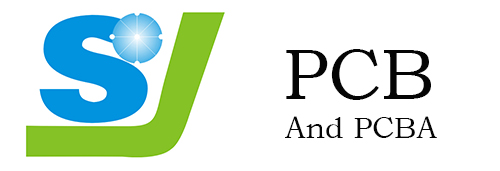
1. The problem of the cleanliness of the circuit board surface;
⒉ The problem of surface micro-roughness (or surface energy). The PCB surface blistering problem on all circuit boards can be attributed to the above reasons. The bonding force between the coatings is poor or too low, and it is difficult to resist the coating stress, mechanical stress and thermal stress generated during the production and processing of the circuit board in the subsequent PCB circuit board production, processing and assembly process. degree of separation.

Now, some factors that may cause the poor quality of the board surface in the production and processing process are summarized as follows:
1. The problem of substrate processing: Especially for some thinner substrates (generally below 0.8mm), because the substrate rigidity is poor, it is not suitable to use a brushing machine to brush the board. In this way, it may not be possible to effectively remove the protective layer specially treated to prevent the oxidation of the copper foil on the board surface during the production and processing of the substrate. Although the layer is thin and the brush plate is easier to remove, it is difficult to use chemical treatment. Therefore, in the production It is important to pay attention to the control of processing, so as to avoid the problem of blistering on the board surface caused by the poor bonding between the copper foil of the board substrate and the chemical copper; this problem will also exist blackening and browning when the thin inner layer is blackened. Bad, uneven color, partial black and brown is not good, etc.
2. The circuit board surface is polluted by oil or other liquids during machining (drilling, lamination, milling, etc.) during the process of poor surface treatment.
3. Washing problem: A large amount of chemical liquid treatment is required for the electroplating of copper sinking. There are many chemicals and solvents such as various acids, alkalis, non-polar organics, etc., and the surface of the circuit board cannot be washed cleanly, especially the copper sinking adjustment and degreasing agent, which will not only cause Cross-contamination will also cause poor local treatment or poor treatment effect on the board surface, uneven defects, and cause some problems in bonding force; therefore, attention should be paid to strengthening the control of washing, mainly including the flow of washing water, water quality, The control of the washing time and the dripping time of the board; especially in winter when the temperature is low, the washing effect will be greatly reduced, and more attention should be paid to the control of the washing;
4. Defective copper sinking brush plate: The pressure of the grinding plate before sinking copper is too large, causing the orifice to deform and brush out the copper foil fillet of the opening or even the orifice to leak the base material. Orifice foaming phenomenon; even if the brush plate does not cause leakage of the base material, the overweight brush plate will increase the roughness of the copper in the orifice, so the copper foil at this place is prone to excessive roughening during the micro-etching and roughening process. , there will also be certain quality hidden dangers; therefore, attention should be paid to strengthening the control of the brushing process, and the brushing process parameters can be adjusted to the best through the wear scar test and the water film test;
5. Micro-etching in the pretreatment of copper sinking and pattern electroplating: Excessive micro-etching will cause the orifice to leak the substrate and cause foaming around the orifice; insufficient micro-etching will also cause insufficient bonding force and cause foaming. Therefore, it is necessary to strengthen the control of micro-etching; generally, the micro-etching depth of copper pretreatment is 1.5-2 microns, and the micro-etching is 0.3-1 microns. Conditionally, it is best to control micro-etching by chemical analysis and simple test weighing method. Corrosion thickness or corrosion rate; under normal circumstances, the surface of the board after micro-etching is bright in color, uniform pink, without reflection; if the color is uneven, or there is reflection, it means that there is a quality risk in the pre-process; pay attention to strengthening inspection; in addition, micro-etching The copper content of the tank, the temperature of the tank liquid, the load, and the content of micro-etching agents are all items to be paid attention to;


